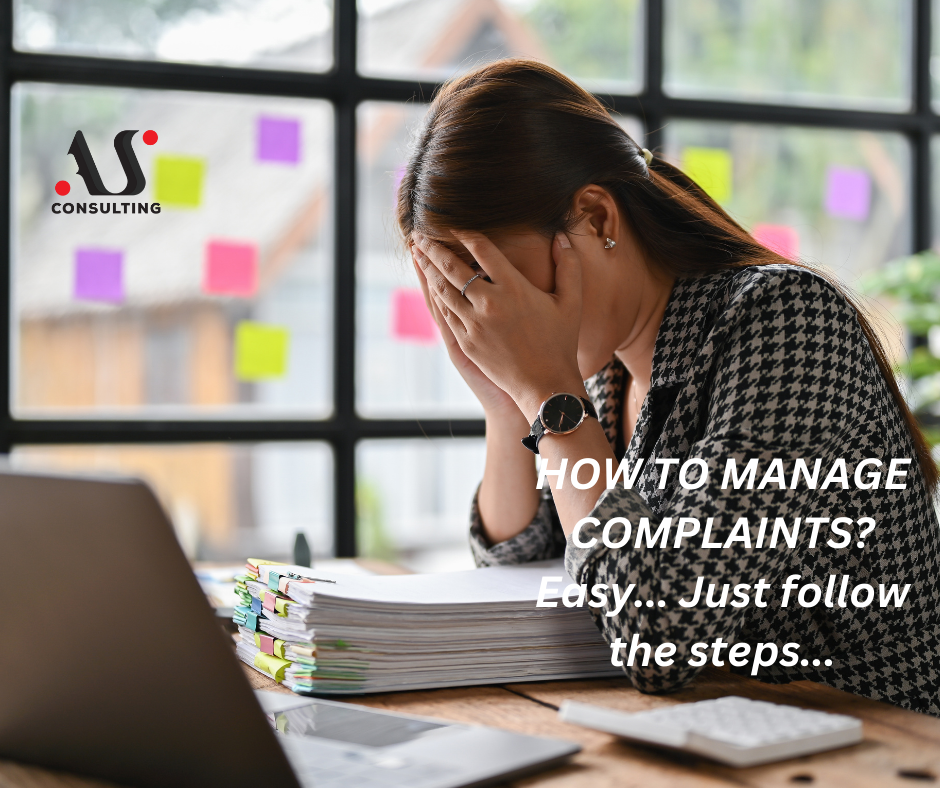
CUSTOMERS AUDITS
July 21, 2024
NONCONFORMITIES AND CORRECTIVE ACTIONS
September 5, 2024I believe we all share the same uncomfortable feeling when we receive any kind of customer or consumer complaint. You have followed all the procedures, the checks have been carried out, and then a complaint arises. I understand that any type of discrepancy creates discomfort, but if the resolution process is handled appropriately, the company moves towards improvement. Complaints should be viewed in this way: their purpose is to highlight potential issues we are not aware of and guide improvements.
What are complaints?
According to the ISO 10002:2014 standard (Guidelines for Complaints Handling in Organizations), complaints are “expressions of dissatisfaction made to an organization, related to its products or the complaint handling process itself, where a response or resolution is explicitly or implicitly expected.”
In line with this definition, the customer or client expects a response or resolution to the complaint. So, how should complaints be resolved to ensure the customer is satisfied with the outcome while the company benefits from understanding the issue that led to the discrepancy?
We will guide you through an effective complaint management process based on the requirements of the ISO 10002:2014 standard (Quality management — Customer satisfaction — Guidelines for complaints handling in organizations).

Complaint Management
First and foremost, the complaint management process must be supported by senior management: senior management encourages the company to develop a complaint management policy and set goals related to complaints. Senior management must ensure:
- The establishment of a complaint management process within the organization and the setting of complaint-related goals;
- Planning, implementing, and continuously improving the complaint management process within the organization;
- Identifying and providing the resources necessary for managing complaints;
- Raising awareness about complaint management and focusing on customer needs throughout the organization;
- Communicating with complainants;
- Appointing responsible individuals for handling complaints and clearly defining their responsibilities;
- Ensuring a process for promptly informing senior management about all significant complaints;
- Periodically reviewing the complaint management process.
To successfully manage the complaint process, a company must have a clear procedure defining all steps: from receiving the complaint to informing the user who made the complaint about the final outcome/solution.
How does the process flow?
First, customers or users should be informed about the complaint submission process (where and how complaints can be submitted) through brochures, pamphlets, and electronically, to facilitate this process for customers/users.

When the company receives a complaint, it must be recorded, and then a resolution process should be initiated, for example:
- Convening a team to review the complaint
- In the case of a valid complaint, initiating a cause determination process and implementing corrective and preventive actions
- Informing customers within defined timeframes
- Informing senior management about the process execution
In the case of a valid complaint, the company initiates a process according to its non-conformance resolution procedures: it is necessary to perform root cause analysis of the complaint to implement corrective action and prevent recurrence of the same non-conformance.

Therefore, complaints should not be feared; they should serve companies as a means of collecting information about potentially undesirable outcomes and guiding improvements in processes.
What information can we gain about a company by examining complaints?
Complaints can tell us a lot about a company, starting from the company’s culture, the resources it has, compliance with management system requirements, respect for customers (clients), and other interested parties. What would you say about a company that regularly receives the same complaints?
- The complaint management procedure is inadequate
- Cause analysis is not performed (or not performed correctly)
- Management does not show sufficient commitment to complaint management
- The company does not care about meeting its users’ requirements
- The company does not have enough resources for managing non-conformities
- The company’s culture is not satisfactory
- Etc.
Thus, we must keep in mind that the problem is not in receiving complaints; the problem arises if they are not managed adequately.
If you need assistance in setting up an effective complaint management system, you can contact our Agency!




